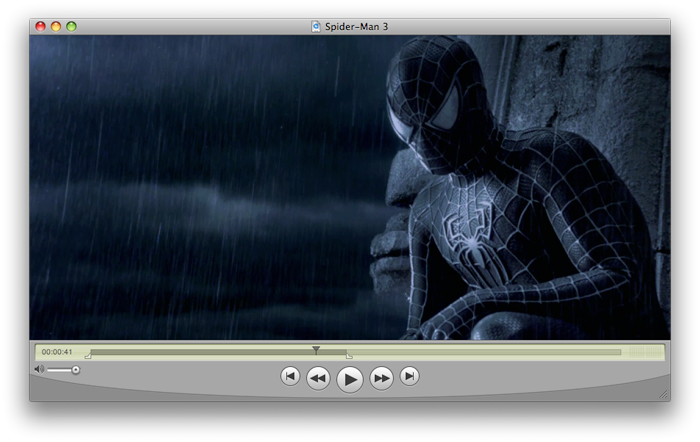
- #Quicktime player for windows 7 how to
- #Quicktime player for windows 7 install
- #Quicktime player for windows 7 update
- #Quicktime player for windows 7 software
- #Quicktime player for windows 7 professional
#Quicktime player for windows 7 software
Specifically I want to avoid installing the Apple Software Updater.ĭownload the QuickTime installer (without iTunes), available from the Apple web site (7.6.6 at the time of writing).


Copy the preferences files to the local profile at runtime using scripts in the OSD file or other tools (e.g.A single registry change can tell QuickTime to store preferences in the roaming profile

Change the preferences folder location.There are several ways of addressing this issue when virtualising QuickTime: %USERPROFILE%\Local Settings\Application Data\Apple Computer\QuickTime\QTPlayerSession.xml (Windows XP / Windows Server 2003).%USERPROFILE%\Local Settings\Application Data\Apple Computer\QuickTime\QuickTime.qtp (Windows XP / Windows Server 2003).%LOCALAPPDATA%\Apple Computer\QuickTime\QTPlayerSession.xml (Windows Vista and above).%USERPROFILE%\AppData\LocalLow\Apple Computer\QuickTime\QuickTime.qtp (Windows Vista and above).Because of this, any settings you may configure will not be included in a QuickTime App-V package. Preferences are stored in the local portion of the user profile, which by default is not virtualised. It’s the those preferences that have the most visual impact on users that are stored in the file system. Successfully virtualising QuickTime requires that users receive the correct preferences before they run the application.įor some absurd reason QuickTime stores part of it’s preferences in the registry, while the other half is stored in the file system. If you’ve ever looked at deploying Apple QuickTime on Windows you have no doubt run into the challenges in configuring settings for this application. This post specifically deals with virtualising QuickTime with Microsoft App-V, but the general process should be similar for any application virtualisation product.
#Quicktime player for windows 7 how to
Usage of this website implies acceptance of our Terms of Use.Here’s how to create a custom Apple QuickTime 7.x installation for virtualisation. mov files if you use VLC Player or the K-Lite Codec Pack for playback.Ĭopyright 2004-2021, Codec Guide. This warning only applies to the QuickTime Player and third party applications that use the QuickTime Codecs. qtl files that you have downloaded from untrusted sources. Your QuickTime installation is secure as long as you don't open any.
#Quicktime player for windows 7 install
Uncheck Install QuickTime icon in system tray. Make the following changes in the QuickTime settings: Right-click on Start -> Control Panel -> search for "QuickTime" in top right corner Press WindowsKey+I -> Control Panel -> search for "QuickTime" in top right corner Start -> Settings -> Control Panel -> search for "QuickTime" in top right corner Step 4: ConfigurationĪccess the Windows Control Panel and open the QuickTime applet: You don't need this, since QuickTime isn't going to receive updates. Windows Start Menu > Control Panel > Software
#Quicktime player for windows 7 update
Uncheck the boxes for Install Desktop shortcuts and Automatically update QuickTime and other Apple software Now you will be on the Destination Folder page. If you use Sony Vegas, then you also need to install the QuickTime Player.

Now run the installer (QuickTimeInstaller.exe) After the uninstallation you should reboot your computer. If you already have QuickTime installed, then we recommend to uninstall it first. This tutorial does not apply to that version! It installs the browser plugins by default, so it isn't secure. That version does not have a customizable installer. If you have Windows XP you need to use version 7.6 of QuickTime. This installer requires Windows Vista or newer. This tutorial shows you how you can safely use QuickTime, by skipping installation of insecure components such as the player and browser plugin. QuickTime has some known security vulnerabilities. This tutorial will help you install only the minimal components needed for such applications. Examples of such applications are: Adobe After Effects, Premiere Pro, Lightroom, GoPro Studio, Sony Vegas, and Traktor DJ.
#Quicktime player for windows 7 professional
However, many professional applications require QuickTime for importing and editing certain file and video formats, such as MP4/MOV, ProRes and DNxHD. This tutorial will show you how to install and configure QuickTime for optimal performance, security, and user satisfaction.Īpple has discontinued development of QuickTime. QuickTime Installation Guide Introduction


 0 kommentar(er)
0 kommentar(er)
